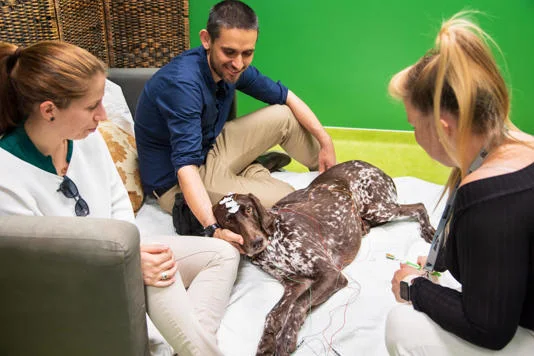Here's a revised version of the content to make it plagiarism-free and unique:
Dogs, much like humans, have the ability to associate words with mental images or ideas, as recently discovered by researchers.
This breakthrough was achieved by researchers in Hungary and Norway during their investigation into brain activity in dogs.
During the study, dog owners were asked to show their pets toys while playing recordings that referenced each toy. Sometimes, the toy matched the word the dogs heard, and other times, it did not.
The researchers observed that the dogs' brains responded differently when the owner said a toy name but held up a different object.
Marianna Boros, a co-lead author of the study and a postdoctoral researcher at Eötvös Loránd University’s Neuroethology of Communication Lab in Hungary, explained, “In the case of the different toys, the response wave is bigger than the response wave for the matching object.”
This phenomenon, she noted, has also been observed in humans but had not been demonstrated in a nonhuman mammal until now.
The researchers selected dogs whose owners claimed they knew at least three object names, including one dog who knew over 230 object names.
According to Lilla Magyari, another co-lead author and a researcher at Eötvös Loránd University’s Neuroethology of Communication Lab in Hungary and an associate professor at Stavanger University in Norway, this ability indicates that dogs link words to mental representations, rather than just contextually associating words with expected actions.
The study aimed to understand how different mammal species process speech and voices, as well as their social cognition.
Dogs, Boros noted, are a unique species due to their long history of close interaction with humans.
They are constantly exposed to human speech and live in human environments, making them particularly attuned to human socio-linguistic cues.
While dogs are adept at responding to certain instruction words, such as “sit” or “come,” some struggle to learn object names.
The researchers sought to explore why this discrepancy exists and to what extent dogs understand human language.
The study employed methods similar to those used in infant cognition research. Owners brought their dogs to the lab, along with toys the dogs were familiar with.
Researchers recorded the owners referring to the toys, then played these recordings for the dogs while they observed their owners through a window.
In some cases, the researchers played one message but showed the dogs a different toy, observing the dogs' brain activity to infer their expectations.
Despite the study's success, Magyari noted its limitations, emphasizing the need for further research.
The researchers are interested in exploring how dogs developed this language skill, whether through domestication or evolution, and plan to conduct more studies to address these questions.

